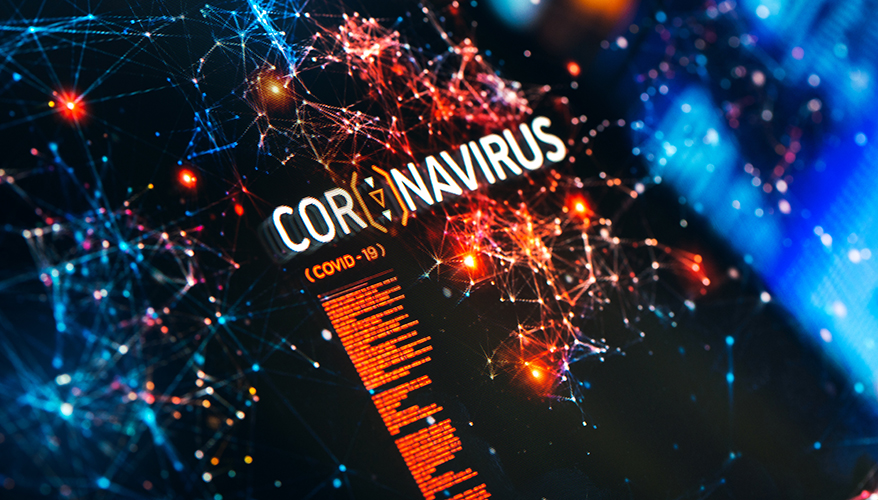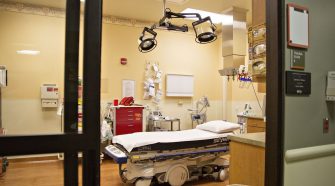Commentary: Apply Advanced Technologies to Fight Pandemics
5/15/2020
iStock illustration
A common expression heard in the military is, “we are always fighting the last war.” In the face of global response to the COVID-19 crisis, the “last war” was the influenza pandemic of 1918.
Although history provides invaluable lessons, it is vital to re-contextualize the issues, problems and solutions of the past in light of the circumstances, capabilities and complexities of the present. The COVID-19 pandemic has generated a dilemma of ensuring public safety and health, while simultaneously attempting to stabilize and sustain the economy.
Meanwhile, demonstrably beneficial, available advanced technologies are not being fully utilized to maximize ethically sound, effective and efficient approaches to reducing the pandemic burden and its effects. If there was ever a time to put such tools to use, it is now.
First, platforms for disease surveillance data need to be modernized. Testing affords understanding of epidemiological characteristics and patterns — such as incidence, prevalence, recovery and demography — and should have begun much earlier. Technologies for testing viral infection and exposure are mature, but they are uncoordinated and unlinked to scale-up pathways best found in the private sector. Genomic tests could reveal data on who is most at risk, and who is likely to be resilient. Thus, crucial data are absent that are needed to inform current and future decision-making regarding extent of physical distancing, implications for socio-economic revitalization, and readiness of U.S. defense forces.
Early recognition of infectious disease threats like COVID-19 requires a globally distributed array of interoperable hardware and software, fielded in sufficient numbers to create a network of linked collection nodes. This necessitates development of biosurveillance systems through collaborative ventures that involve strategic allies and public-private partnerships as well as international competitors. Such capability and cooperation do not exist at this time — either across the U.S. federal government or with many of our global partners. Mechanisms for cooperative surveillance with global competitors, while admittedly difficult, are currently strained, and therefore tenuous. Of course, caution and considerable deftness are required to realize such “cooperative competition,” and this requires a more trusting reliance upon intelligence and diplomatic services.
Next, advanced computational tools should be utilized regularly. Artificial intelligence, machine learning and digital health approaches should be employed for modeling potential spread of the virus, and identification, design and development of testing and therapeutic — if not preventative — interventions. AI and digital health were not part of preparedness protocols in the event that the most concerning pathogens were to become pandemic. Such preparedness would be “ahead of the curve” if and when the pandemic began — rather than having to “jump-start” such efforts in pandemic response amidst a rapidly evolving crisis.
Of course, any approaches to enable and provide individuals’ readily accessible, real-time medical data generates ethical, legal and social concerns in both civilian and military settings. There needs to be development of legal measures to prevent or mitigate potential bias in treatment and regard, and to decrease possible effects of data hacking.
Supply chains also require technology modernization and fidelity. COVID-19 effects upon global trade have illuminated vulnerabilities in U.S. supply chains, their foreign dependence, and revealed needs for more flexible and expedient supply lines. That requires rigorous inspections of foreign imports for fidelity, exploring innovative manufacturing technologies and protecting against single-point failures from abroad.
Many companies in the private sector have demonstrated that they can rapidly and flexibly steer biotechnology platforms toward the production and scaling of diagnostics and medical molecules, assisted by computational tools. These efforts should more regularly reinforce traditional supply chains.
Finally, it’s not 1918, and it needn’t be moving forward. The COVID-19 crisis should be regarded in the literal sense — a time of change. We believe that there are lessons to be learned from the pandemic of 1918 applicable to the present and future. Just as systems of medical response were threatened, prompted to respond, and altered by the pandemic of 1918, so too must those infrastructures and functions of the governmental, civilian and commercial sectors of today.
Current emerging biotechnologies could — and should — be prudently engaged to develop advanced diagnostic tests and tools, create more accurate epidemiological models, innovate medical countermeasures and manufacturing platforms, and digitally engage the U.S. citizenry in the response. Such methods must be used within a networked biosecurity enterprise that collaboratively engages a whole-of-nation system to enable more effective and efficient response, irrespective of whether threats are natural or manmade. Such a system would enable capability to far better predict, prepare, if not prevent the next biosecurity war, and not merely repeat the errors of the last.
Diane DiEuliis is a senior research fellow at the Center for the Study of Weapons of Mass Destruction, National Defense University. Peter Emanuel is a senior research scientist for bioengineering at Army Futures Command’s Chemical Biological Center. James Giordano is a professor at the Departments of Neurology and Biochemistry, and Pellegrino Center for Clinical Bioethics Georgetown University Medical Center, and a senior fellow at the Project in Biosecurity, Technology and Ethics at the Naval War College. Alexander Titus is chief strategy officer at the Advanced Regenerative Manufacturing Institute. The views expressed in this article are those of the authors and do not reflect the official policy or position of the Department of Defense or the U.S. government.
Topics: Defense Department

















